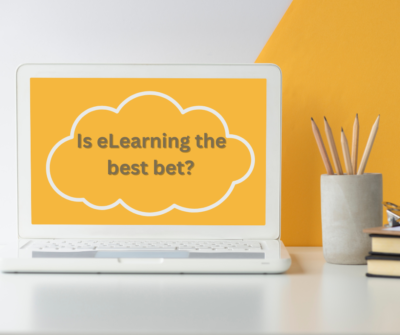The eLearning space has rapidly transformed various industries across verticals. Whether it’s education, insurance, real estate or the corporate sector in general, reliance on digital content has grown manifolds, owing to its flexibility and easy of access. Users can access training modules directly on their smartphones or tablets. Universities and schools have resorted to eLearning to cater to demanding times during COVID and otherwise. Besides, it’s possible to reach a larger and a geographically diverse range of audience digitally. However, should eLearning always be on the cards? The simple answer is no. Now eLearning can be a great option in certain scenarios, but it may not be ideal for all situations. Whether you are an educator, program manager, SME or a stakeholder, it’s important to know when to consider eLearning an option and more essentially when not. Here’s a breakdown that can help you with your decision-making process:
When do I go for eLearning?
Accessibility and Flexibility
- When learners need to access content at their own pace or on their own schedule (e.g., working professionals, students with other commitments)
- If you have a global or geographically dispersed audience, as eLearning allows them to access courses from anywhere
Budget Constraints
- It can be a more affordable option than traditional in-person training, especially when there are large groups of learners or if you need to update content regularly
Standardized Content
-
- When you need to deliver consistent information across a large number of people or locations without variation (e.g., company-wide training on policies or procedures)
Self-Motivated Learners
-
- For learners who are independent, self-disciplined, and comfortable with technology, eLearning provides an opportunity to progress without external pressure
Access to a Variety of Resources
-
- When you need to provide learners with a variety of multimedia content (videos, quizzes, simulations, etc.) in one place
Continuous Access to Materials
-
- eLearning is ideal for providing ongoing access to materials for review or refresher courses
When eLearning might not be the best bet?
When in-person Training is a must
- When learners need direct, face-to-face interaction with instructors for clarification or hands-on practice (e.g., medical or technical fields, where practical skills need to be demonstrated)
-
- If learners struggle with motivation or lack the discipline to stay on track without regular reminders and structure, eLearning can be ineffective
Complex Subjects Requiring In-depth Explanation:
-
- For highly complex subjects where learners need personalized instruction or feedback, eLearning might not be sufficient to ensure understanding
Collaborative Learning:
-
- If the learning experience benefits from peer collaboration, group discussions, or teamwork (e.g., team-building activities or interactive classroom debates), in-person learning may be more effective
Limited Access to Technology:
- When learners don’t have reliable internet access or the necessary devices, eLearning can become a barrier
Cultural or Language Barriers:
-
- In some cases, learners from diverse cultural backgrounds or non-native speakers may find it harder to engage with eLearning content if it’s not culturally or linguistically appropriate
In summary, eLearning is a great choice for flexible, scalable, and cost-effective training, especially when learners are self-motivated. However, for topics that require real-time interaction, hands-on practice, or deep engagement, traditional in-person learning might be more suitable.

Thank you for your sharing. I am worried that I lack creative ideas. It is your article that makes me full of hope. Thank you. But, I have a question, can you help me?
Sure. Please go ahead with your question.